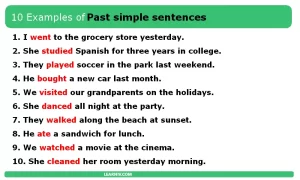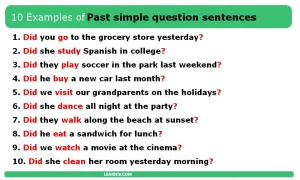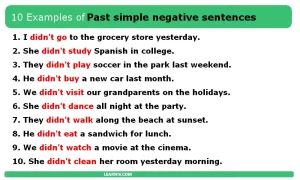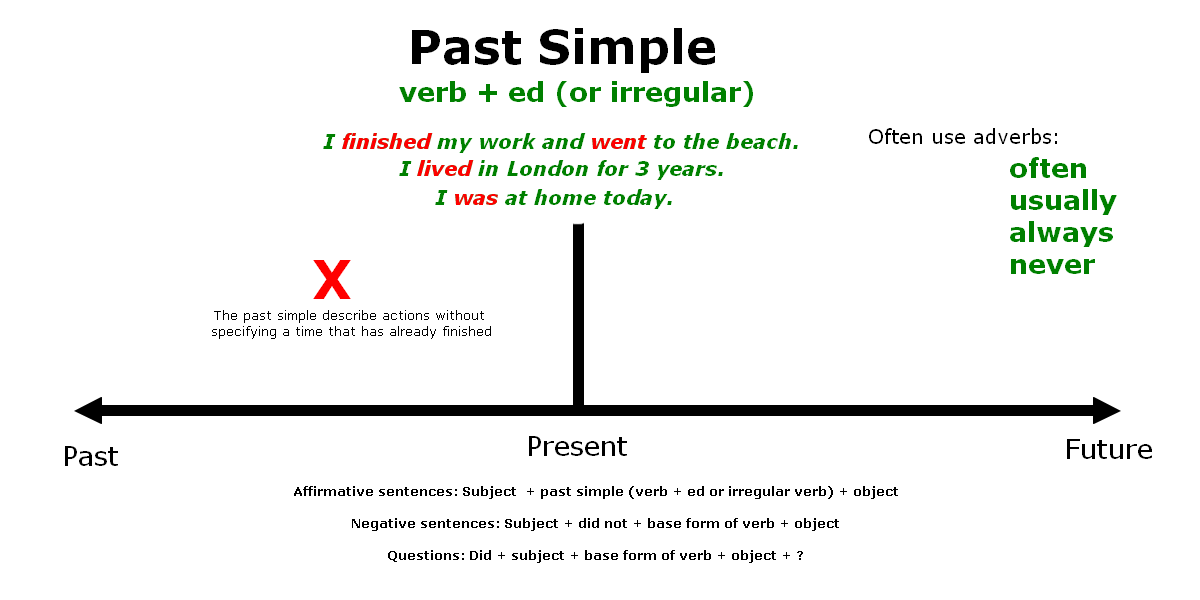
Sentences in the past simple are essential for talking about past events in English. The past simple is a verb tense that is used to talk about actions that have already happened. In this article, I will give you some examples of simple past sentences in English and explain how to construct them.
To construct “simple past sentences” in English, the past form of the verb is used. For most regular verbs, this is achieved by simply adding the ending “-ed” to the infinitive of the verb. For example, the verb “walk” in the simple past tense is “walked”. For irregular verbs, the past form does not follow a pattern and must be learnt by heart. Examples of irregular verbs in the past simple are “went”, “ate” and “came”.
Here are some examples of “simple past sentences” in English
- I “walked” to the store yesterday.
- She “studied” hard for her exam last night.
- They “went” to the beach on Saturday.
- He “played” soccer with his friends after school.
- We “watched” a movie at home last night.
- She “ate” breakfast before leaving for work.
- They “came” to visit us on Sunday.
- I “cleaned” my room over the weekend.
- He “worked” late every day last week.
- We “played” board games with our family on Friday night.
See more examples of simple past sentences.
As you can see in these examples, the “simple past” is formed using the past form of the verb. It is important to remember that, although most regular verbs follow the rule of adding “-ed”, there are many irregular verbs in English which must be learnt by heart.
In conclusion, “simple past sentences” in English are crucial for being able to talk about past events. The “simple past” is formed using the past form of the verb, and there are many irregular verbs that must be learnt by heart.
Types of sentences
In addition to knowing how to construct simple past sentences in English, it is important to understand the differences between affirmative, interrogative and negative sentences.
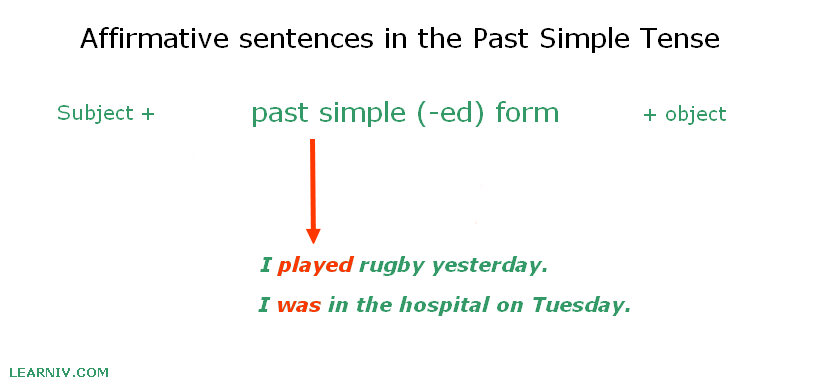
Affirmative sentences
Affirmative sentences in the simple past are used to describe events that happened in the past. They are constructed using the subject followed by the verb in the simple past and, if necessary, the direct object. For example:
- She “played” soccer with her friends after school.
In this example, “She” is the subject, “played” is the past simple verb and “soccer with her friends” is the direct object.
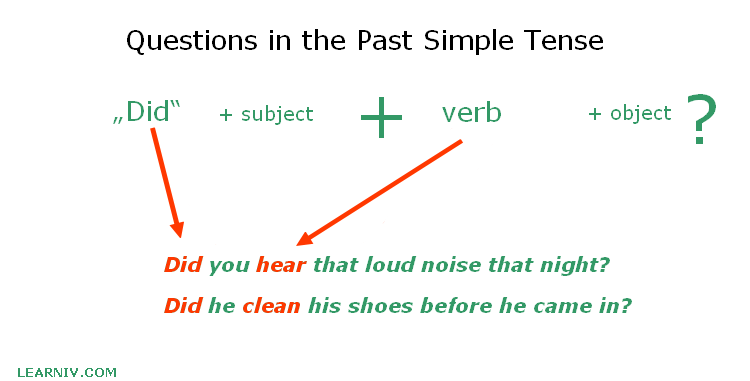
Interrogative sentences
Simple past interrogative sentences are used to ask questions about past events.They are constructed by reversing the subject and verb in the simple past.In English, the way to ask a question is by adding the auxiliary verb “did” at the beginning of the sentence, followed by the subject and the main infinitive verb. For example:
- Did you “clean” your room over the weekend?
In this example, “you” is the subject, “clean” is the main verb and “did” is the auxiliary verb indicating that it is a question.

Negative sentences
Finally, negative sentences in the simple past are used to express that something did not happen in the past.They are constructed using the subject followed by the auxiliary verb “did” in the negative, followed by the main verb in the infinitive and, if necessary, the direct object. For example:
- They “didn’t come” to visit us on Sunday.
In this example, “They” is the subject, “didn’t come” is the negative form of the auxiliary verb “did” followed by the main verb “come” and “to visit us” is the direct object.It is important to note that the negative form in the simple past is constructed using the auxiliary verb “did” in the negative, not the main verb. In addition, the negative past simple form is commonly abbreviated in everyday speech, as in the example above where “didn’t” is a contraction of “did not”.
In summary, when constructing “simple past sentences” in English, it is important to understand the differences between affirmatives, interrogatives and negatives. Affirmatives are used to describe events that happened in the past, interrogatives are used to ask questions about past events and negatives are used to express that something did not happen in the past.
Here are five examples of sentences in the past simple
- “I walked to the store yesterday” – This sentence describes an action that took place in the past.The verb “walked” is the past tense of the normal verb “walk”, and the use of “yesterday” indicates that the action took place on a specific day.
- “She studied for her exams all night”. – In this sentence, the verb “studied” is the past tense of the regular verb “study”. The use of “all night” indicates that the action was completed during a specific period of time in the past.
- “He ate pizza for dinner last night”. – Here, the verb “ate” is the past tense of the irregular verb “eat”. The use of “last night” indicates that the action occurred on a specific night in the past.
- “They watched a movie at the cinema on Friday.” – This sentence describes a past event that occurred on a specific day. The verb “watched” is the past tense of the regular verb “watch”, and the use of “on Friday” indicates the specific day on which the event occurred.
- “The team won the championship last year. – This sentence describes an action completed in the past, and the verb “won” is the past tense of the irregular verb win. The use of “last year” indicates that the action took place in a previous year.
In conclusion, the simple past is an important and commonly used tense in English, and is used to describe actions or events that occurred in the past.
More examples of Past Simple sentences
more examples:
